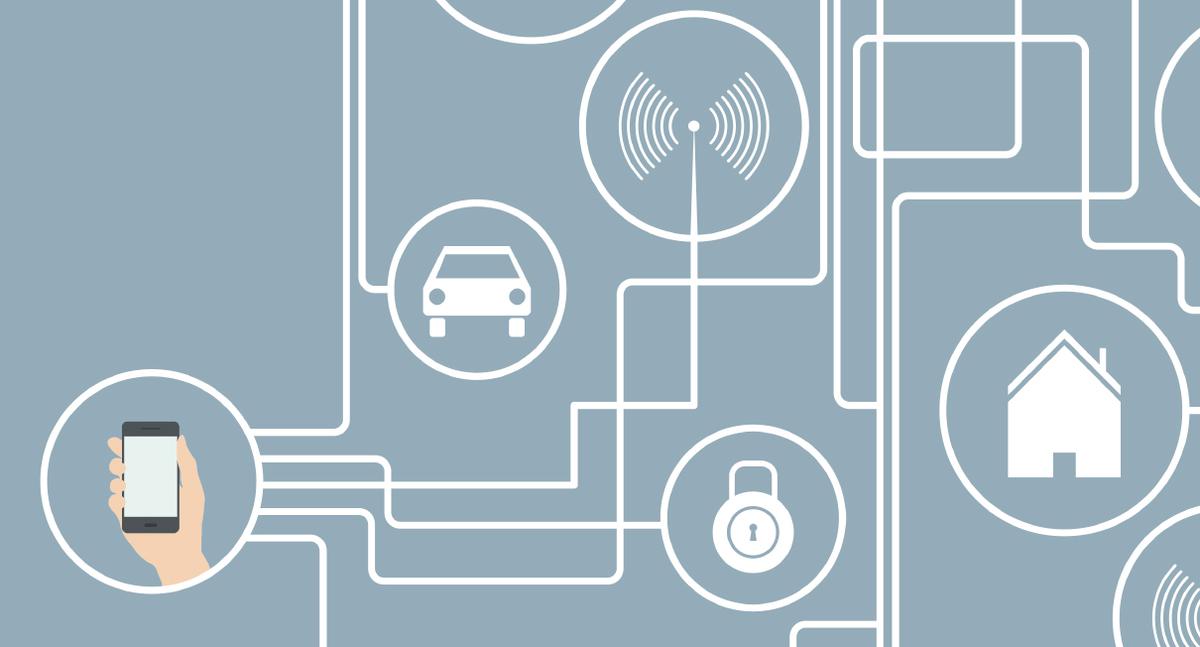Of all the connected devices in the world today, possibly the best-known and best-understood by the public at large is the personal mobile device. Whether it’s your laptop, tablet, hybrid, wearable, or smartphone, there are few things the average person understands and connects with like these. There’s little mystery to each, we use them constantly, and they enrich our lives immensely.
From analog, to GSM, to third, and now fourth generation networks, a lot has changed with our phones. A lot of tech has also taken firm root in the mobile ecosystem. Short-range tech like Bluetooth, and to a lesser degree, NFC have practically made their way to even lower-end devices, and will probably continue to do so until they’re just as common as colored screens. There are currently few surprises in the smartphone world, and that’s okay. You probably don’t need us to tell you what we’ve got going at the moment either, since you use it on a daily basis. We’re here to tell you about something far more abstract: the Internet of Things (IoT).
Before anything else, I think this has to be said: The Internet of Things isn’t just things with Internet connectivity. You’re mostly thinking of the “smart device” trend. It’s that, sure, but much more too. It’s not really a device, or even a kind of device. It’s a phenomenon.
Cutting out the middleman
Right now, internet-connected machines are dependent on human intervention. You aren’t likely to see or feel it, but inevitably, somewhere down the line, a person has to be inserted into the mix to make things happen. There was a time when practically all the data floating around the Internet was created by a person, whether by hitting a button, typing, or snapping a photo. More and more though, things are collecting information (and by extension, creating data) all on their own.
While warm bodies behind a screen, manning a control panel can be comforting, it’s not always the best way to go. Human beings have limited attention spans, we get tired, and we demand silly things like fair wages, vacation leaves, and healthcare. It’s all so inefficient. For example, would you hire a person whose only job was to monitor just how well-stocked your fridge is? Please feel free to disregard this question if you’re an eccentric billionaire. Menial tasks, and some critical tasks that require unwavering attention do great with automation, and that’s one of the things we’re looking at with the Internet of Things.

All connected, all the time
You may have some problems imagining just how this trend will be useful to you, or how it will impact your life. It’s mostly going to work quietly, in the background, though in a lot of really cool ways. At the heart of it, the IoT phenomenon lets devices talk to each other, and share information that lets them do their jobs better, or help you do your job better. It’s not really a specific task they will do that makes it awesome. It’s the fact that all these little, everyday objects can talk to each other that makes it really great.
As an example, think about your car. Now think about all the cars on all the roads in your city. Imagine how much information they can gather as a group: traffic, road congestion, locations, accident info. If all that information can be gathered, shared, and processed between the cars, they could come up with a real-time, changing optimal route to feed the driver, with no human intervention.
Taking it to another level, the cars, once they are “aware” and unwavering in their awareness, could potentially eliminate accidents due to user error. While similar technology is available now, it generally relies on sensors on the car, which works autonomously from the others on the road. All the cars working together offers a much higher level of redundancy, so there are more ways to catch itself if things go wrong.
There are a lot of great ways it’ll change shipping as well. With containers, and at some point, individual packages online, you can track packages in real-time, without having to rely on a person or machine having to scan a barcode at each transit point. As things are done now, human error can still sidetrack a package, causing delays. Once the package is self-aware, not only will you be able to track it, it can even let the whole network know if it’s going the wrong way. Airlines, shipping, and baggage will never be as hassle-free as that.
The security question
There are a lot of concerns with the IoT becoming reality. Some examples can be quite scary, such as hackers causing car accidents, or a little more mundane, like those same hackers burning your toast. The reality of the matter is that if you get sloppy, a lot can go wrong. The scope of connected devices means a lot can be fiddled with, but manufacturers are working on ways to make it safer. Regardless of what they do though, a lot still remains in the hands of the user. Usernames and passwords must still be made secure, and don’t be careless with them. It’s a concern, sure, but not something that will outweigh the benefits of connecting all the little things in our lives.
There’s not a whole lot we can really do but wait for the IoT to materialize and start making our lives awesome. We do expect it’s going to change our lives quietly but profoundly, and at the heart of it, it really is all about connectivity.
Also published in GADGETS MAGAZINE September 2015 Issue
Words by Ren Alcantara
